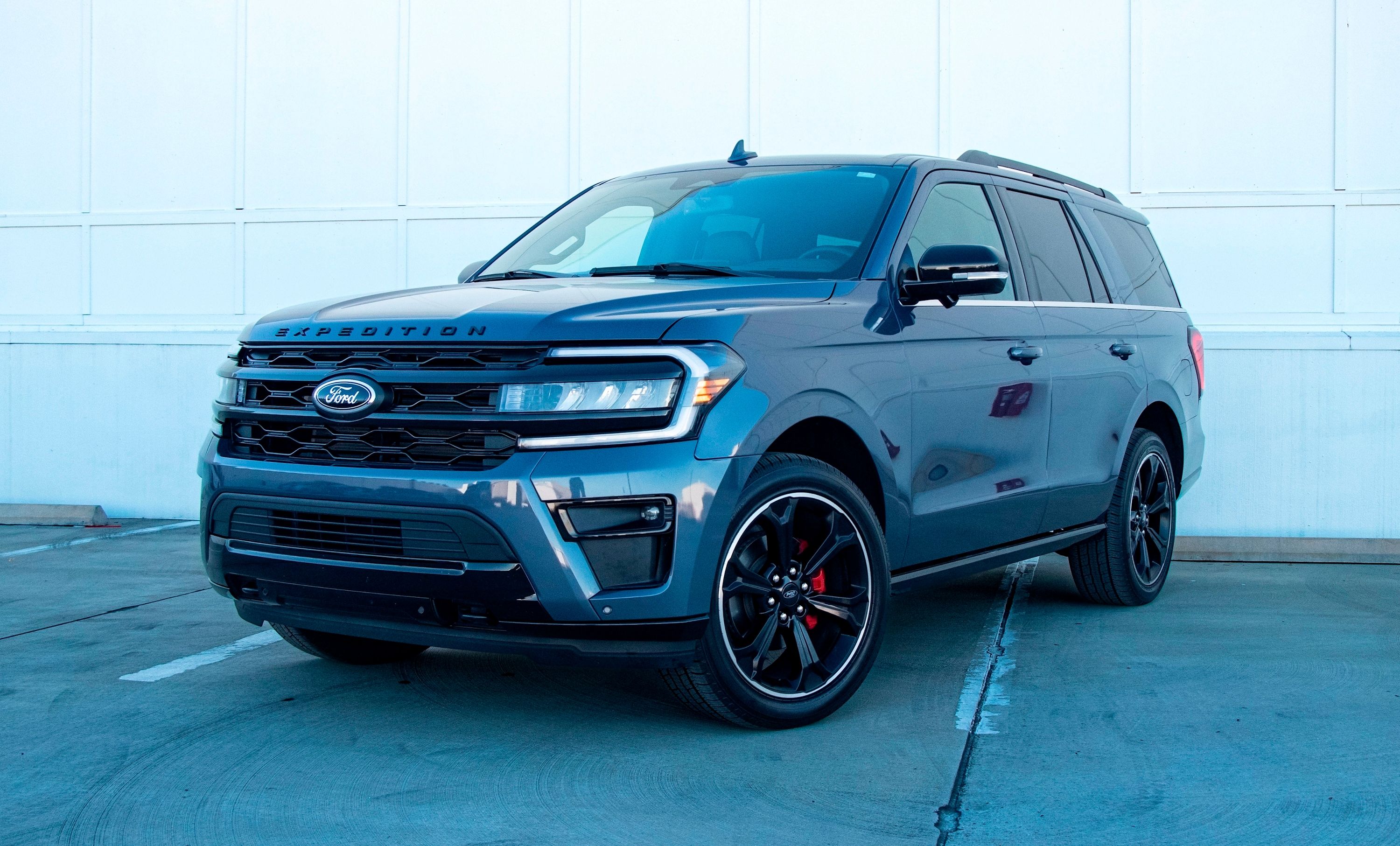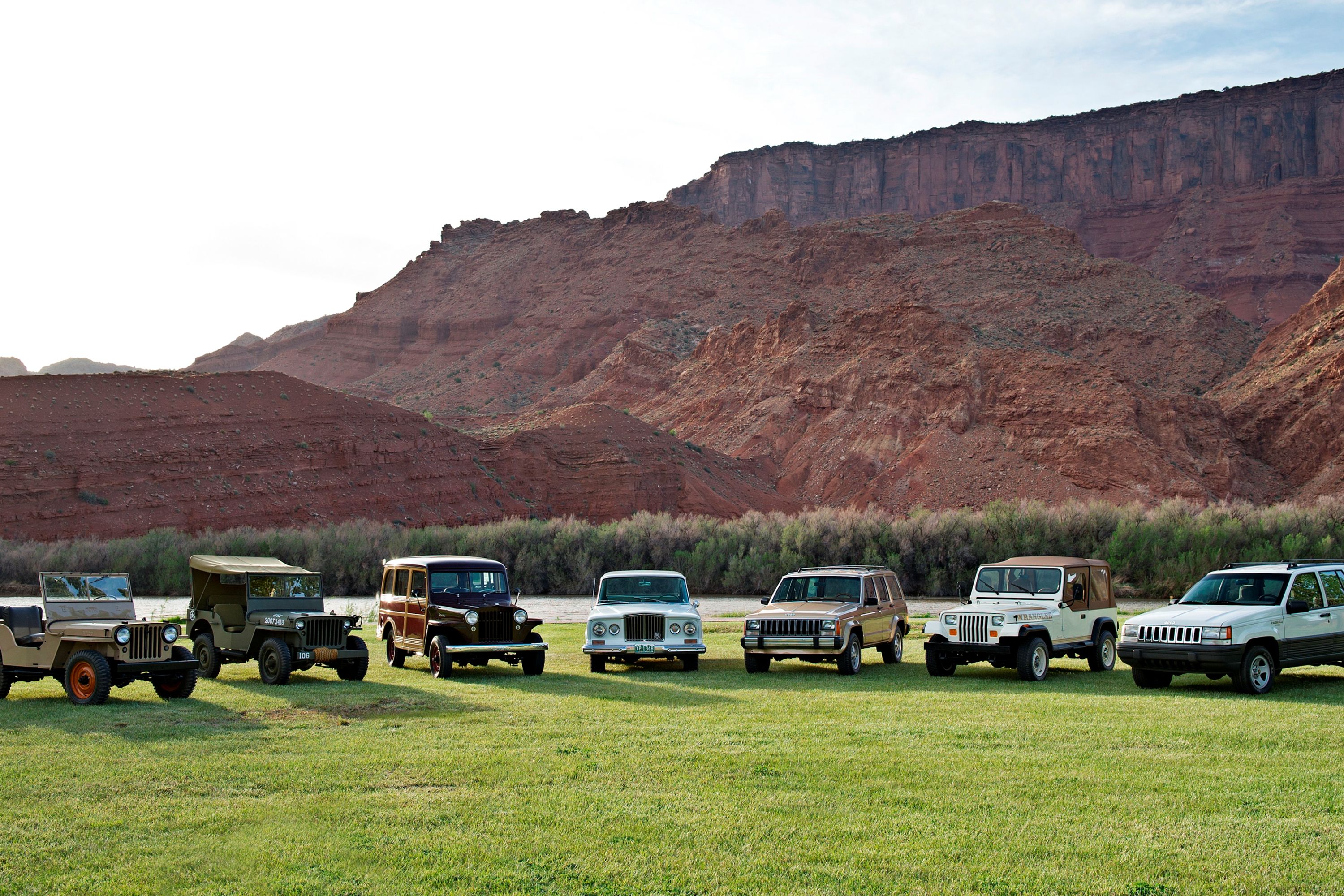
There used to be a time when categorizing the different body types for cars was simple, but things have changed. In the '70s, the word SUV did not even exist. Americans crossed the land's highways in sedans, station wagons, and minivans. Today, many terms exist to describe the people-movers we drive, but some, such as the aforementioned SUV, crossover, CUV, SAV, are more nuanced. Rather than describing their own distinct segment, they subdivide a border classification. And it all started with the coining of the acronym 'SUV' in the '80s.
What Does SUV Stand for?
So, what does SUV stand for? Essentially, it's a sports utility vehicle. While many vehicles from the '50s onwards could retrospectively be called SUVs, the acronym didn't become popular until the '80s. But that doesn't tell you what an SUV actually is. When the phrase was coined, it referred to a very specific type of vehicle - the standard SUV definition was a truck chassis with a station-wagon-type passenger-vehicle body mounted on top. It also had a four-wheel drivetrain. According to this definition, early adventure vehicles such as the 1935 Chevrolet Carryall Suburban and 1940s Willys Jeep Station Wagon were traditional body-on-frame SUVs.
The format lives on in today's body-on-frame SUVs. Various models are built on a common, shared chassis. Their heavy-duty frames are of rugged construction and allow for extensive towing capacity - some are even good for towing nearly 10,000 pounds. Their large bodies also allow for up to 7-passenger accommodations; there are even 8-seater SUVs available nowadays. GM, Chrysler, and Ford currently all have body-on-frame platforms used for both trucks and SUVs. However, some of the more traditional, old-school SUVs are still available today, such as:
- Ford T3 platform. As indicated in the definitions, traditional body-on-frame SUVs run on truck platforms and the Ford T3 is one such frame that underpins not only the Ford F-Series of trucks but also the Ford Expedition and luxury Lincoln Navigator full-size SUVs.
- General Motors GMT T1XX platform. Similar to the Ford T3 platform, this truck frame underpins all the GM full-size trucks, such as the Chevrolet Silverado and GMC Sierra, as well as GM's full-size body-on-frame SUVs, namely the Chevrolet Tahoe and Suburban, the GMC Yukon, and the Cadillac Escalade.
- Ram DT platform. This truck frame is under the fifth-generation (DT) Ram full-size truck, and will also underpin Jeep's soon-to-be-launched Wagoneer and Grand Wagoneer body-on-frame SUVs.
Nearly no midsize SUVs - the next-smaller class beneath the above-mentioned full-size models - have body-on-frame construction. They almost universally adopt monocoque-type construction, like normal cars. They usually also offer AWD as an option, though not the hardcore off-road 4WD of the large SUVs. Read more about the differences between AWD and 4WD here, and . Also keep in mind that, if you're buying a vehicle exclusively for towing, you need to be well-informed about the pitfalls associated with towing with EVs or hybrids.
What is a Crossover SUV?
If we restricted the meaning of SUV to ladder-on-frame vehicles, we would exclude tons of other cars we call SUVs today. According to that original SUV definition, all the other similar cars would have to be called crossovers. But is that what a crossover is? The main difference between a crossover and an SUV is that the latter is a body-on-frame vehicle built on a truck platform and a crossover is built on a car platform, with no separate frame. But using the terms like that would be terribly confusing because we would have to call vehicles such as the Jeep Grand Cherokee, BMW X5/X6/X7, and Mercedes GLE/GLS crossovers. Today, we refer to them as SUVs.
Having figured all that out, what is a crossover SUV then? People like SUVs and the feeling of adventure the SUV nomenclature evokes, so many manufacturers simply tack on 'SUV' after 'crossover' to sell more cars. It's just another way of saying the vehicle is higher-riding than a car but usually has a sleeker design than a 'proper' SUV. And what is a CUV? CUVs are just another name for crossovers. It's a crossover utility vehicle, alternatively called a compact utility vehicle. BMW's 'SAV', which stands for sports activity vehicle, is essentially the same thing.
It's important to note that all of these vehicles - crossovers, crossover SUVs, CUVs, and SAVs - are lower off the ground than the larger, more heavy-duty SUVs, are more car-like to drive, cannot go very far off-road, and are often available in 2WD models. Our list of the best SUVs for 2021 contains many 'compact' models - America's most popular class of SUV. The compact sports utility vehicle class is populated by the likes of the:
- Toyota RAV4
- Honda CR-V
- Ford Escape
- Lincoln Corsair
- Nissan Rogue
- Volkswagen Tiguan
- Subaru Forester
There is an even smaller subcompact class and these are the 'SUVs' with the best MPG ratings on the market - very similar to compact cars'. They are almost never offered with all-wheel drive:
- Kia Seltos
- Honda HR-V
- Hyundai Venue
- Nissan Kicks
- Toyota C-HR
What is the Meaning of SUV in 2021?
So we've come to a crossroads where, in 2021, the original meaning of SUV has become useless and the acronym today refers to any station-wagon-type of body on raised suspension. We do tend to call the larger variations with a higher ground clearance 'SUVs', and these are often AWD, while the smaller and lower 'SUV' tends to be called a crossover, meaning it crosses over between the class of the old-school SUV and a normal car - and 2WD is common among them. In terms of SUV vs crossover, sticking to rigid definitions can be very confusing.
It would be accurate to say that a modern SUV can be of either body-on-frame or unitary construction, as long as it is significantly more off-road capable than a car and at least offers AWD/4WD. In fact, many off-road-capable modern SUVs don't use body-on-frame construction anymore. Examples include the Land Rover Defender and Ford Bronco Sport. Crossovers can be defined as vehicles that have a higher ground clearance than a car, but are not very off-road capable and handle very much like a car, often with 2WD being the default drivetrain option.
Conclusion
Whether it's crossover vs SUV or CUV vs SUV, people have become enamored with riding higher off the ground than a normal sedan. They love the idea of adventure this body format represents and, truth be told, even a compact 2WD crossover can go more places than a low-riding sedan or coupe, so perhaps the hype is justified. It would certainly explain why Americans love them so much.

